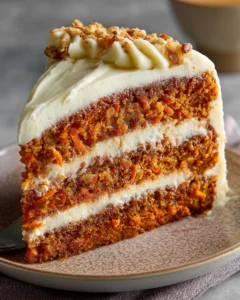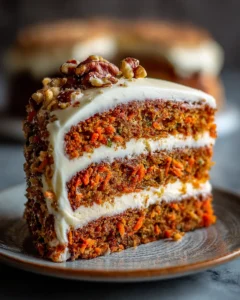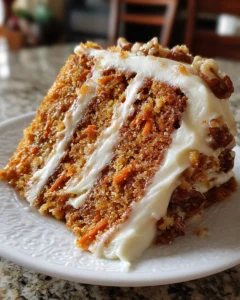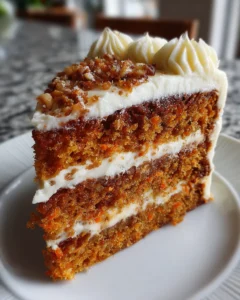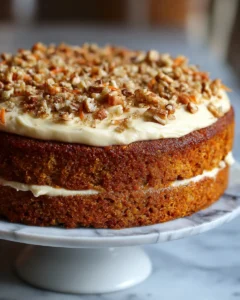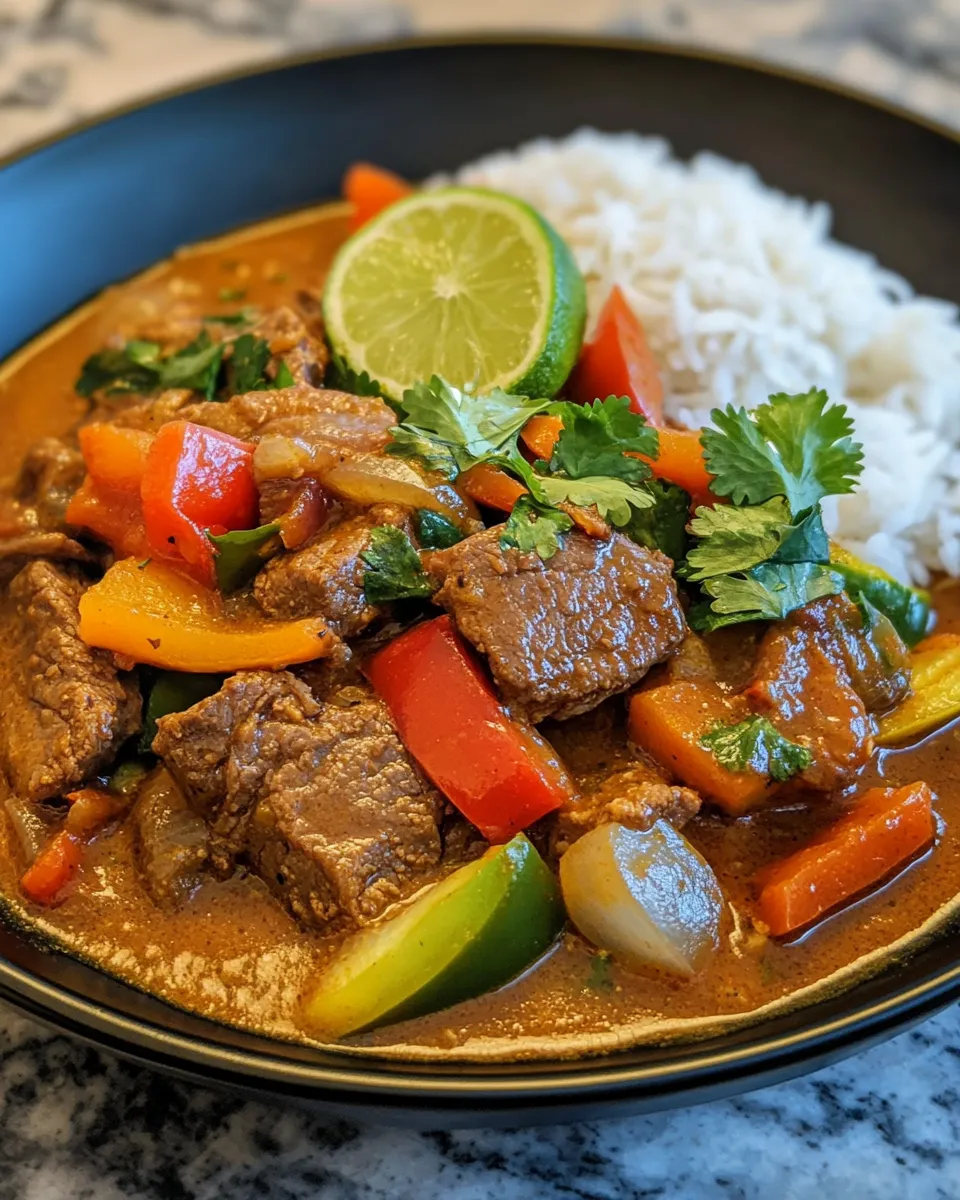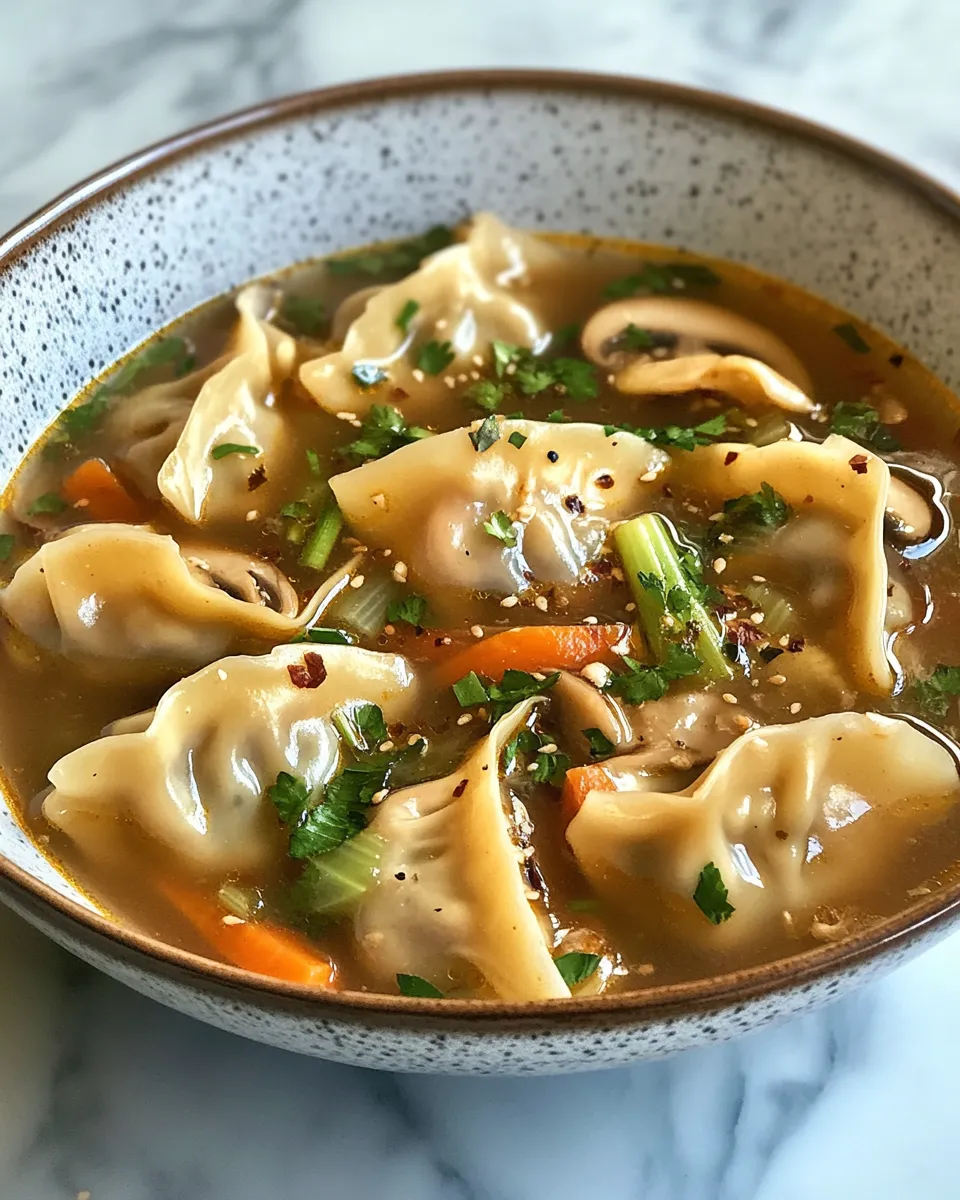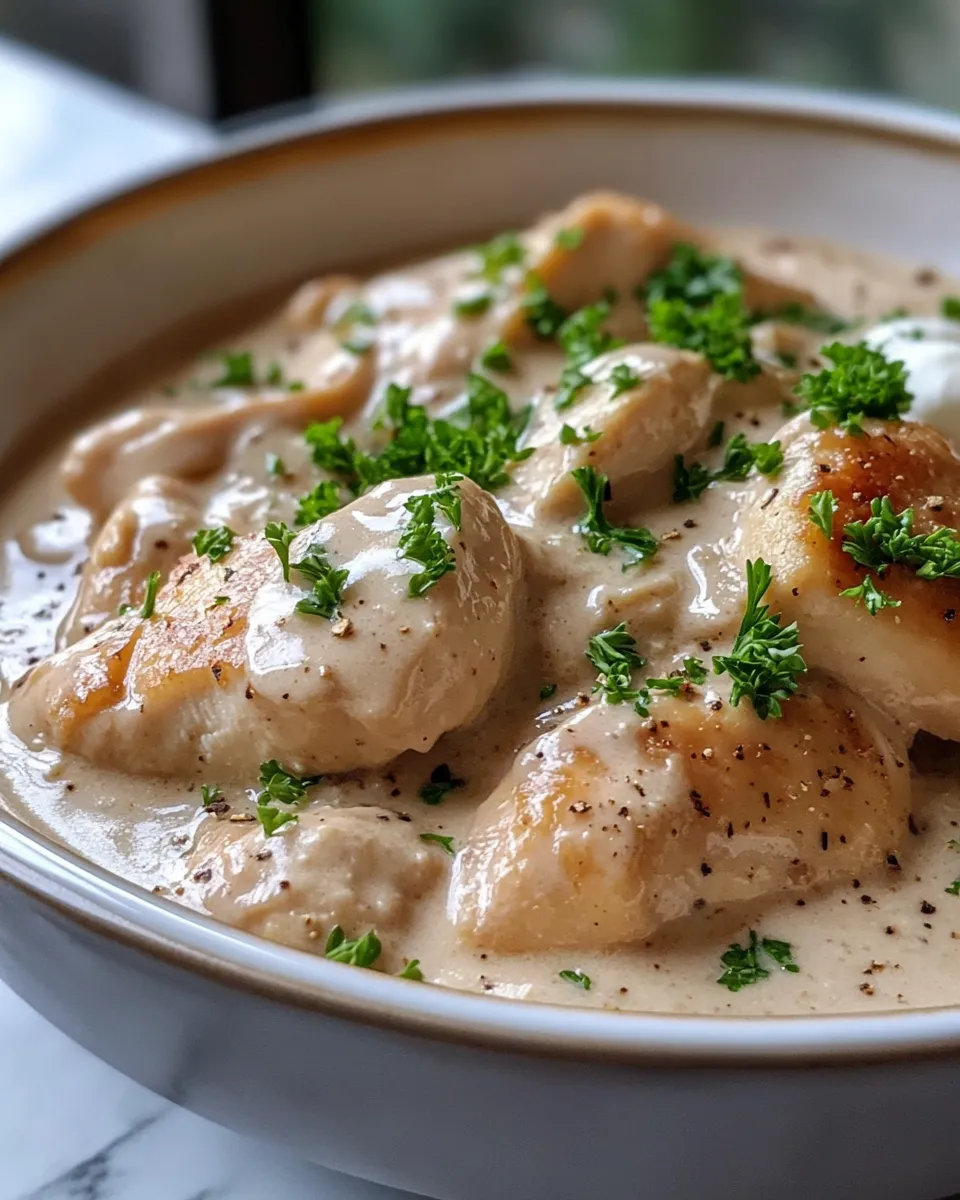Few desserts capture the warmth and comfort of home quite like a Carrot Cake with Cream Cheese Frosting. With its moist, spiced layers, studded with shredded carrots and lightly toasted nuts, this cake is perfect for cozy afternoons, festive gatherings, or as a centerpiece for a special celebration. Imagine slicing through the soft, tender layers to reveal the creamy frosting that melts in your mouth with every bite.
The inspiration behind this classic recipe dates back to traditional carrot cakes of the 19th century, when bakers used carrots as a natural sweetener in desserts. Over time, this humble cake evolved into the iconic treat we know today, celebrated for its rich flavor, moist texture, and irresistible cream cheese frosting. Whether you’re baking for a holiday, a birthday, or a quiet Sunday at home, this carrot cake brings comfort, joy, and a touch of nostalgia to every occasion. Its combination of spices, sweetness, and creamy frosting makes it a dessert that’s hard to resist—and even harder not to share.
Ingredients
Using high-quality ingredients is essential for a moist, flavorful carrot cake. Freshly grated carrots and real cream cheese take this cake to the next level.
For the Carrot Cake
-
2 cups all-purpose flour
-
2 teaspoons baking powder
-
1 1/2 teaspoons baking soda
-
1/2 teaspoon salt
-
1 teaspoon ground cinnamon
-
1/2 teaspoon ground nutmeg
-
1/4 teaspoon ground cloves
-
1/2 cup vegetable oil
-
1/2 cup unsalted butter, softened
-
1 cup granulated sugar
-
1/2 cup packed brown sugar
-
4 large eggs
-
2 teaspoons vanilla extract
-
3 cups finely grated carrots
-
1 cup chopped walnuts or pecans (optional)
-
1/2 cup crushed pineapple, drained (optional for extra moisture)
-
1/2 cup shredded coconut (optional)
For the Cream Cheese Frosting
-
8 ounces cream cheese, softened
-
1/2 cup unsalted butter, softened
-
4 cups powdered sugar, sifted
-
2 teaspoons vanilla extract
-
1–2 tablespoons milk (if needed for consistency)
Step-by-Step Instructions
Creating a Carrot Cake with Cream Cheese Frosting is simple when you follow these steps carefully. The key is balancing the spices, moisture, and creaminess to achieve a tender, flavorful, and visually stunning dessert. Taking your time with each step ensures the perfect texture and flavor, making this cake both impressive and comforting.
Step 1: Prepare Your Pans
Start by preheating your oven to 350°F (175°C). Proper preheating ensures even baking and consistent results. Grease two 9-inch round cake pans with butter, making sure to cover every corner. Lightly dust with flour or line the pans with parchment paper. This step is essential to prevent sticking, allowing the cakes to release cleanly from the pans after baking. For an extra touch of precision, trace the bottom of the pan with parchment and trim it to fit perfectly, giving your cake a professional edge.
Step 2: Mix Dry Ingredients
In a medium-sized bowl, whisk together the flour, baking powder, baking soda, salt, cinnamon, nutmeg, and cloves. Whisking thoroughly ensures the spices are evenly distributed and prevents clumps. This step lays the foundation for a well-balanced cake with even rise and flavor in every bite. Take a moment to enjoy the warm aroma of the spices, which hint at the cozy flavors to come.
Step 3: Cream Butter, Oil, and Sugars
In a large mixing bowl, combine the softened butter, vegetable oil, granulated sugar, and brown sugar. Using a hand or stand mixer, beat the mixture for 3–4 minutes until light, fluffy, and pale in color. This process incorporates air into the batter, contributing to a soft, tender crumb. Properly creamed butter and sugar form the backbone of a moist cake, so don’t rush this step.
Step 4: Add Eggs and Vanilla
Add the eggs one at a time, beating well after each addition. This ensures that the eggs are fully incorporated, which provides structure to the cake. Stir in the vanilla extract, which enhances the sweetness of the carrots and spices. The combination of eggs and vanilla adds richness and depth, creating a base for the vibrant flavors of the cake.
Step 5: Combine Wet and Dry Ingredients
Gradually fold the dry ingredient mixture into the wet mixture. Mix until just combined—overmixing can result in a dense, heavy cake rather than a light, airy one. Scrape down the sides of the bowl periodically to ensure all ingredients are incorporated evenly. The batter should be thick but smooth, ready to embrace the grated carrots and optional ingredients.
Step 6: Fold in Carrots and Optional Ingredients
Gently fold in the grated carrots along with any optional ingredients such as chopped nuts, crushed pineapple, or shredded coconut. The carrots add natural sweetness and moisture, while optional ingredients enhance texture and flavor. Folding carefully preserves the air incorporated in the batter, keeping the cake light and tender.
Step 7: Bake the Cake
Divide the batter evenly between the prepared pans, smoothing the tops with a spatula. Bake in the preheated oven for 25–30 minutes, or until a toothpick inserted into the center comes out clean. The cakes should spring back lightly when pressed. Baking times may vary slightly depending on your oven, so start checking a few minutes early to avoid overbaking.
Step 8: Cool the Cake
Allow the cakes to cool in the pans for 10–15 minutes. Then, carefully transfer them to wire racks to cool completely. Cooling prevents the cream cheese frosting from melting when applied and ensures a stable cake structure.
Step 9: Prepare the Cream Cheese Frosting
In a large bowl, beat together softened cream cheese and butter until smooth and creamy. Gradually add powdered sugar, mixing thoroughly to remove any lumps. Stir in vanilla extract, and if the frosting is too thick, add milk one teaspoon at a time until the desired consistency is achieved. The frosting should be smooth, spreadable, and slightly fluffy for easy application.
Step 10: Assemble the Cake
Place one cake layer on a serving plate and spread a generous amount of frosting evenly across the top. Carefully place the second cake layer over the first and frost the top and sides, smoothing as desired. Decorate with chopped nuts, a light sprinkle of cinnamon, or even edible flowers for a beautiful presentation. Chill briefly if necessary to set the frosting before slicing.
This detailed approach ensures a perfectly moist, flavorful carrot cake with creamy frosting that is visually stunning and incredibly satisfying with every bite. Following these steps carefully allows even novice bakers to achieve a professional-quality dessert.
Tips for the Perfect Carrot Cake
Use Fresh, Firm Carrots
Fresh carrots provide the best flavor and moisture. Finely grate them for even distribution throughout the batter.
Toast Your Nuts
Toasting walnuts or pecans enhances their flavor and adds a subtle crunch that complements the soft cake.
Don’t Overmix the Batter
Overmixing can result in a dense cake. Mix until ingredients are just combined for a tender, moist crumb.
Add Moisture Boosters
Ingredients like crushed pineapple or applesauce can enhance the cake’s moisture without making it overly sweet.
Frost at the Right Temperature
Ensure the cake is completely cooled before frosting. Warm cake can cause the cream cheese frosting to melt and slide off.
Store Properly
Store the frosted cake in the refrigerator, covered, for up to 5 days. Bring to room temperature before serving for the best flavor.
Variations to Try
Pineapple Carrot Cake
Add 1/2 cup crushed pineapple for extra moisture and a subtle tropical flavor.
Spiced Carrot Cake
Increase cinnamon to 2 teaspoons and add 1/4 teaspoon ground ginger for a deeper spice profile.
Mini Carrot Cake Cupcakes
Divide the batter into a muffin tin for individual servings. Bake 18–20 minutes and frost after cooling.
Gluten-Free Option
Use a 1:1 gluten-free flour blend in place of all-purpose flour. Add 1 teaspoon xanthan gum if your blend does not contain it.
Serving Suggestions
-
Serve with a cup of hot coffee or chai tea for a cozy treat.
-
Pair with a vanilla ice cream scoop for extra indulgence.
-
Garnish with additional chopped walnuts or a dusting of cinnamon for a festive touch.
Frequently Asked Questions
Can I Make This Cake Ahead of Time?
Yes! This carrot cake is ideal for preparing ahead of time, which makes it perfect for parties, holidays, or busy weekdays. You can bake the cake a day in advance and store it covered in the refrigerator. If you prefer, frost the cake immediately after it has cooled, cover it tightly, and refrigerate until serving. Alternatively, you can wait to frost the cake until just before serving, which ensures the frosting stays perfectly fresh and creamy. Preparing ahead not only saves time on the day you plan to serve the cake but also allows the flavors to meld, creating an even richer taste.
Can I Freeze the Cake?
Absolutely. Freezing is a great way to extend the shelf life of your carrot cake. After the cakes have completely cooled, wrap each layer separately in plastic wrap to prevent freezer burn, then place them in a freezer-safe container or wrap them with aluminum foil for extra protection. The cake can be frozen for up to 3 months. When ready to serve, transfer the layers to the refrigerator and thaw overnight. Once thawed, frost the cake as usual. Freezing preserves both the texture and flavor, so you can enjoy a homemade cake even weeks after baking.
Can I Use a Different Sweetener?
Brown sugar is key to achieving the deep, caramel-like flavor that pairs beautifully with the spices and carrots. However, you can experiment with alternatives such as coconut sugar or raw cane sugar for a slightly different flavor profile. Coconut sugar offers a subtle, earthy sweetness that complements the warm spices in the cake. Keep in mind that alternative sweeteners may slightly alter the color and texture of the cake, so adjustments may be necessary.
How Do I Avoid a Soggy Cake?
Maintaining the proper moisture balance is essential. Do not over-grate the carrots, as excess moisture can negatively affect the cake’s texture. If using crushed pineapple, make sure it is thoroughly drained before folding into the batter. Additionally, ensure that your cream cheese frosting is not too runny, as this can seep into the cake layers and make them soggy. Properly preparing and measuring ingredients helps create a tender, moist cake without compromising structure.
Can I Make a Vegan Version?
Yes, a vegan carrot cake is entirely possible. Replace the eggs with flax eggs (1 tablespoon ground flaxseed mixed with 3 tablespoons water per egg), swap the butter for vegan butter, and use a dairy-free cream cheese alternative for the frosting. The cake will remain moist and flavorful, with the same spiced richness that makes traditional carrot cake so beloved.


